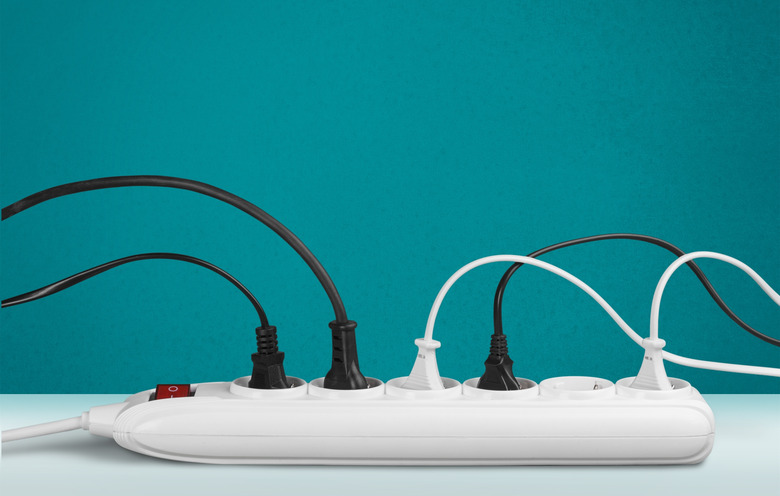Can You Use An Extension Cord With A Surge Protector?
We may receive a commission on purchases made from links.
A number of people believe that extension cords and surge protectors are compatible. While this is technically correct, it's actually a misconception: In truth, it's against Occupational Safety and Health Administration and National Fire Protection Association (NFPA) safety regulations to use a surge protector with an extension cord in either combination. The two components are not designed to work with one another.
This often causes confusion, since at first glance both components seem to accomplish the same goal in slightly different ways. So, can you use a surge protector with an extension cord? Most of the time, no, but there are certain exceptions.
Here's what to know before you start to plug anything in.
Power Strip vs. Surge Protector
Power Strip vs. Surge
Protector
The misconception about extension cords and surge protectors can be traced to a misunderstanding about the difference between a power strip and a surge protector. So, what exactly is the difference? A power strip is meant to increase the number of available outlets whereas a surge protector's function is to prevent a power surge from damaging electronics (i.e. it does not necessarily add outlet space). Some surge protectors have included batteries as well, functioning as uninterruptible power supplies in the event of a surge or brief power outage (these are sometimes sold as "UPS cords").
Adequate Short-Term Solutions
Adequate Short-Term
Solutions
Using an extension cord with a surge protector is a fire hazard at worst, and at best runs the risk of damaging or degrading the cords of either component. However, this risk is primarily tied to the long-term use of this setup. If you've confirmed that your extension cable is not damaged or worn, you can use it with a power strip for short periods of time, ideally under four hours.
It is best to combine these only with low-current machines — and to ensure that the cord and surge protector are rated to work with the same amount of power. Don't use a high-current surge protector with a low-current cord, and if one component uses a 14-gauge wire, the other should as well. (These details will be noted on the packaging of your surge protector and extension cords.)
Solution: Surge Protector Extension Cord
Solution: Surge
Protector Extension Cord
To minimize risk and guarantee safety, the best solution is permanent wiring. When that isn't possible, a short-term workaround is to purchase and use a surge protector extension cord, sometimes referred to as a power surge extension cord or a long-cable surge protector. These components provide the benefits of a surge protector, often with multiple outlets, while featuring a power cable multiple feet in length.
A surge protector extension cord can be used without the risks presented by linking two incompatible components together, and can be used in tandem with some power strip mounts to create temporary wall or ceiling power outlets. But remember — it's only a temporary solution and should be dismantled as soon as the task in hand has been completed.
